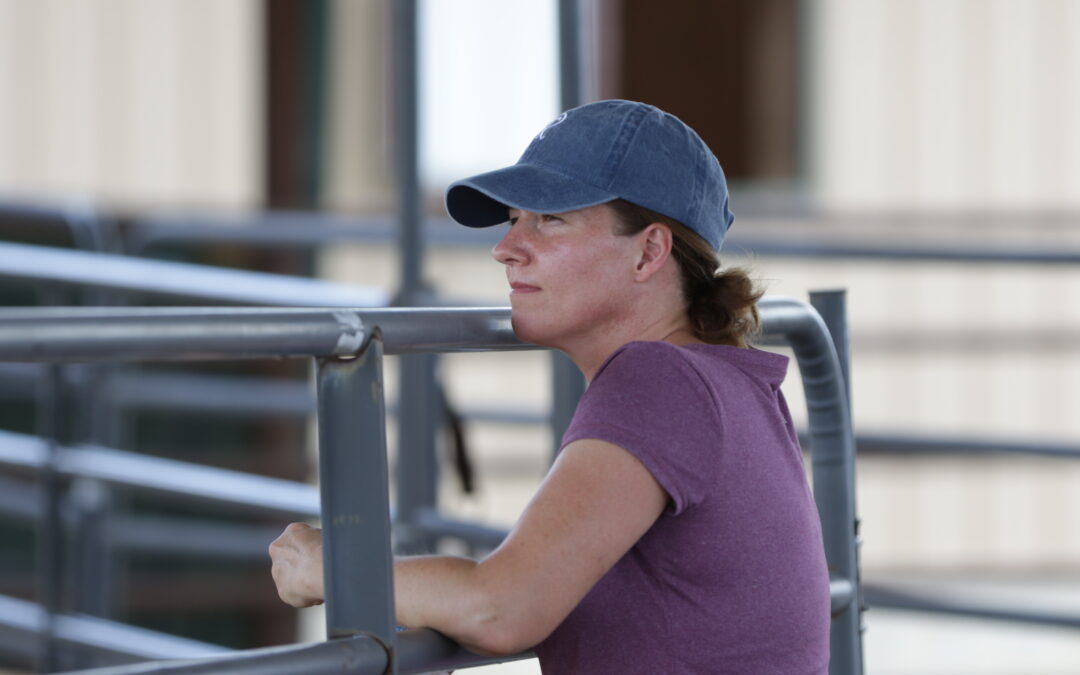
by Bettina Shultz-Jobe, LPC, NBCC | Aug 12, 2025 | Basics of Natural Lifemanship, Case Studies
One of the questions I hear most often from students who have completed the Fundamentals of Natural Lifemanship is this:
“How much direction do I give my clients? Do I teach them exactly what I learned in the Fundamentals, or do I let them discover the principles on their own?”
It is an important question, and the answer is not as straightforward as we might hope. The truth is, the answer is both yes and no. It depends. . .
It depends on pacing. It depends on the practitioner’s experience and skillset. It depends on the client’s goals. And it depends on where they are in their process.
This question matters because the way we teach and offer guidance directly shapes a client’s ability to form authentic, healing relationships: with the horse, with others, and with themselves.
Teaching and Guiding
When we teach the Fundamentals, we offer a clearer, more structured path for building connection with the horse. We do this intentionally. Students need a solid foundation to understand how to build safe, connected relationships. We call this the “straighter line.” It helps you build more meaningful connections using principles that are grounded in science and lived experience.
But client sessions rarely follow a straight line. Healing is a winding path that unfolds in its own time. In those moments, the relationship goes beyond technique—it becomes a space for true healing, moving at its own natural pace.
With clients, I often slow things way down. I may teach less, and guide more. I may ask more questions. I may simply hold space. Sometimes it is best for a client to figure out the principles on their own, with my guidance. Other times, it is more helpful to teach them exactly what is learned in the Fundamentals, and then offer support and guidance when difficulty arises.
Both paths can lead to transformation. The key is in discerning which one is needed.
When Guiding Teaches – finding the answer
Tim and I once worked with an eight-year-old girl who had been adopted from the foster care system. Like many of the clients we meet in this work, she had endured an overwhelming amount of trauma. Her ACE score was a ten. And yet, she was the most delightful little munchkin you ever did see—when she smiled, her sweet button nose would wrinkle, lifting her pink glasses up off her face. She was a hot mess, in the very best sense of the word. Her adoptive parents loved her deeply, but they were worried.
In her world, safety had never been familiar. She would wander away from the bus stop and walk into strangers’ homes asking for snacks or to use the bathroom. She wasn’t reckless—just searching for connection in the only ways she knew. Her history had distorted her ability to sense risk.
When we worked with the horse, we didn’t tell her what to do. Instead, we asked questions and let her choose the path. She picked a horse with almost no training and, of course, on day one she wanted to ride. That was her pattern—leap before learning, jump in before reasonably assessing risk.
So we guided, but never handed her the answers. She dragged a saddle that weighed more than she did into the round pen, only to find her horse wouldn’t stand still.
“Have you taught him to stand still?” we asked. “Have you helped him feel safe with a saddle?”
She hadn’t—so she did. She learned about pressure, regulation, energy, and connected detachment. Then she decided to mount, but the horse wouldn’t stand at the block. To get him there, she first had to teach him to follow. That meant practicing connected attachment: backing up when he came toward her, lowering her energy, softening her body.
We talked about how prey animals respond to threats, and she problem-solved how to teach her horse that she is safe – that she is not a predator. She figured out why we back up when the horse looks at us, without us teaching it. She began to practice backing up, lowering her energy, and softening her body. And in doing so, she started to learn what safety looks and feels like—not just from others, but within herself.
Through guided discovery with her horse, she transformed moments of impulsivity into opportunities to experience safety, connection, and self-awareness—learning the principles of relationship from the inside out.
To learn more about some of the ways we guided her to her own answers, instead of teaching her the NL principles of relationship, check out this webinar.
When Teaching Guides – still finding the answer
Another client came to me after the devastating loss of a child. She sought therapy for other reasons (more on that in the webinar), and we were working on establishing connection with the horse.
I taught her exactly what to do: when the horse turns and looks at you, release pressure. Step back. Let your shoulders drop. Exhale. Lower your energy. Create space.
She understood the instructions. She even practiced them without the horse.
But when the moment came, and the horse looked at her, she stood still. Her body would not move. I reminded her gently. Still, she stood frozen.
So we explored what was happening. We tuned into her body. And what we found was this: Backing up required a bit of softening. Softening stirred a fear of collapse. Collapse was an incomplete movement that felt like letting go. Letting go felt like a loss of connection. And for her, that brought her straight back to the raw grief of losing her child.
What began with structured teaching became a doorway into something much deeper. We worked slowly. She started by softening ever so slightly at the knees. She practiced releasing energy in small, safe increments. Over time, she began to feel how softening doesn’t dissolve connection—it can deepen it.
In this case, I taught her clearly. But the transformation happened in the space where her body could not yet follow what her mind knew. That is where the therapeutic work began.
To learn more about how I guided her when her feet simply could not move, I invite you to watch this webinar.
Principles for Practitioners
There is no single right answer when it comes to teaching versus guiding.
Sometimes, clients need structure. Other times, they need a bit more space to explore and problem-solve. The decision depends on their goals, their nervous system state, and their capacity for relational engagement in that moment. It also depends on the practitioner’s comfort with uncertainty and their ability to attune, to both the horse and person.
When I first began this work, I taught a lot. I planned each session carefully, offered clear instructions, and guided clients step by step. And that approach worked—it helped people learn, it created safety, and it opened doors to healing.
Over time, my style evolved. I now step into sessions with fewer plans and more presence. I give less instruction, hold more space, and offer guidance that meets the moment rather than a script.
And remember—amazing things still happen when we teach. There are many roads to the same healing outcome.
You don’t have to begin with unstructured presence. It’s okay to start with more structure. As you grow more confident in your own embodiment of the work, you can gradually lean into guiding more and teaching less—allowing sessions to unfold organically.
The key is to start somewhere, with plenty of self-compassion and grace, and then gently challenge yourself to take small risks toward more guidance and less instruction.
Why This Matters (For Facilitators and Clients)
The relationship between client and horse often parallels the relationships they have elsewhere.Through this work, they learn what it means to feel safe, to have and set boundaries, to build trust, and to show up with authenticity.
When we strike the right balance between teaching, guiding, and letting go, we invite our clients into a space where they can explore these relational dynamics in a safe, embodied way. Teaching often creates safety and predictability, laying the foundation, but we learn not by being told, but by doing. Guiding can offer just the right amount of direction and support, allowing our clients to heal not just by understanding, but by experiencing.
And that is where the deepest change happens.
Want to Go Deeper?
If you have ever wrestled with the question of how much to direct your clients, you are not alone. It is one of the most common questions I receive, and for good reason. The answer is complex, but it is also learnable.
I recently talked about this topic in a webinar, where I shared these stories in great detail and offered practical, concrete tools to help you navigate this balance with more confidence and clarity.
We will also explore topics like this in the NL Intensive, where you will have the chance to practice, reflect, and grow in community.
I hope you will join us.
Watch the Webinar Join NL Intensive
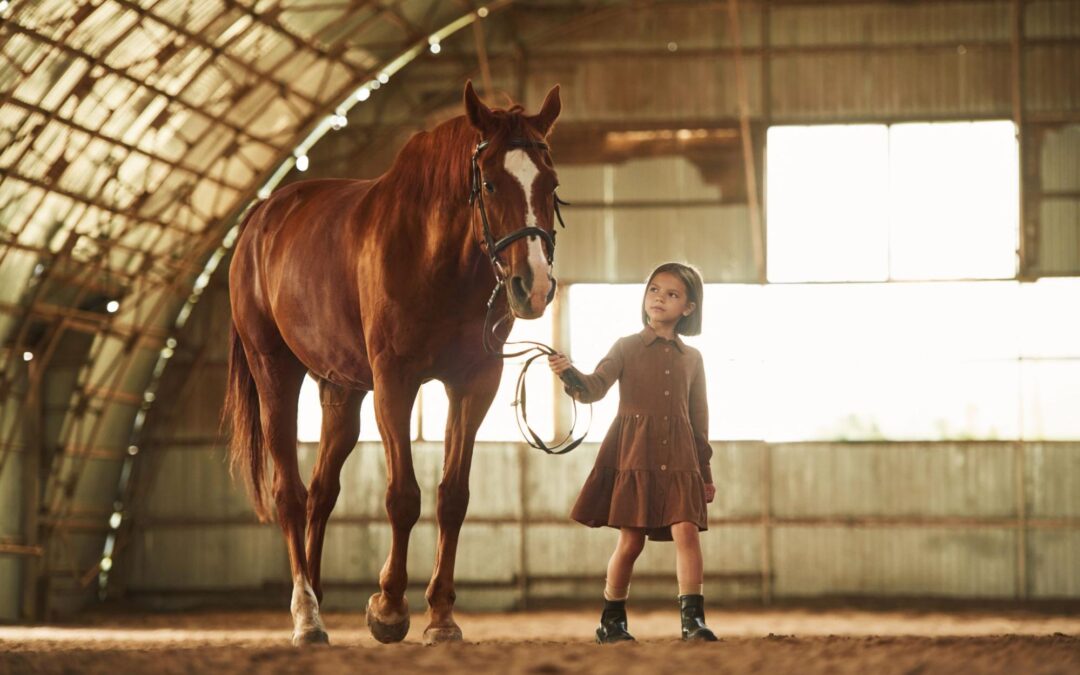
by Bettina Shultz-Jobe, LPC, NBCC | Jun 26, 2025 | Basics of Natural Lifemanship, Case Studies, Equine Assisted Trainings, Personal Growth
When it comes to equine-assisted services, we often focus on the profound emotional and psychological breakthroughs that happen when humans and horses connect. We celebrate the moments when a client finds their voice, builds confidence, or processes trauma through their relationship with these magnificent equine partners. But there’s something fundamental we’re missing in many conversations about this work—something that determines whether these breakthroughs happen at all.
Your body is speaking, whether you realize it or not, and the horses are listening.
The Language Horses Understand Best
When we engage with a horse, we enter a conversation that precedes spoken language. Horses are hardwired to read the subtle communications of movement, posture, and energy that reveal intention, emotional state, and even past experiences. They don’t care about your credentials, your therapeutic techniques, or your carefully crafted treatment plans. They care about what your body is telling them at this moment.
This creates both an incredible opportunity and a significant challenge for those of us working in equine-assisted services. The opportunity lies in the immediate, honest feedback horses provide about our internal states. The challenge is that most of us have never been trained to understand what our bodies are actually communicating.
We live in a culture that has taught us to separate the mind from the body, to treat physical wellness as distinct from mental health. But here’s what science tells us: our brain, body, and nervous system develop together from the very beginning.
In utero, it’s not that the brain develops first and then tells the body to move. Rather, the body begins moving in reflexive patterns, and it’s through this movement that neural pathways form.
Movement builds the brain. And trauma, by altering our movement patterns, reshapes our neural landscape in ways that affect how we think, feel, and relate to the world.
Trauma Changes the Way We Move
When trauma occurs, the body adapts. These adaptations are often protective, and they are usually unconscious.
We see this played out in the bodies of trauma survivors—shoulders turned inward, eyes cast downward, feet turned inward with toes curled toward the midline. This particular posture, interestingly, mirrors one of our earliest intrauterine movements, when a developing baby moves into the protective fetal position.
When someone lives in this contracted, protective posture consistently, they’re not just physically small—they’re emotionally and energetically small too. They’ve learned to make themselves quiet, invisible, safe. And horses, with their exquisite sensitivity to body language and energy, respond to this communication immediately.
A Story of Change
One of our clients, a woman in her 40s, came to us with a history of early and repeated trauma. Her body moved in a way that reflected her past. She walked with her head down, her shoulders rounded, and her toes curled slightly inward. She carried herself as if trying to disappear.
When she made requests of the horses, they ignored her. Some even pushed her out of their space.
Rather than focusing on what she was saying, we focused on how she was moving. We worked with developmental movement patterns—specifically, the push and reach patterns that help restore a sense of agency. These patterns are part of what we teach in the Embodied Developmental Movement Series.
This wasn’t about telling her how to stand. Instead, we invited her to explore “push” in her body – her ability to push into the earth for support, and her experience of pushing on an object, or another person, to rediscover her internal strength. In exploring “push”, we also explore the felt sense of “I am here”.
As she practiced these movements, her nervous system began to shift. Her stance changed. Her energy became more organized.
We didn’t ask her to stand a certain way, we helped her find what she needed to hold herself tall.
Eventually, the horses started to respond to her differently. They began to listen, to connect, and to willingly choose to cooperate with her requests.
The change was not just physical, it was emotional and relational. And it began in the body.
Subtle Adjustments Make a Big Impact
Another client, an executive with a high level of anxiety, presented a different movement pattern. On the surface she appeared confident, straight-backed with her head up. But her movement told a more complex story.
When she reached toward her horse, her weight shifted backward. Her knees were locked, and she stood heavily on her heels. She believed she was grounded. In truth, she was leaning away.
With gentle guidance, she softened her knees and allowed her full foot to meet the ground. For the first time, she felt her toes. This simple change brought her into a more neutral and balanced position. Her horse responded with a deep breath and moved toward her.
That moment marked a turning point. By learning to move in a more integrated way, she experienced a deeper sense of connection—with herself and with her horse. A shift she couldn’t help but take into the rest of her relationships.
Retained Reflexes and Incomplete Patterns
We also see clients who carry reflexes that were never fully integrated during development. (Sometimes it is just a part of themselves who carries the reflex.) The Moro reflex, for example, is a startle response that should complete in infancy. When it remains active, it can show up in adult clients as sudden backward movement, difficulty recovering from surprise, or heightened reactivity.
In equine sessions, this often becomes visible during mounted work. If a horse makes a sudden stop or shift, the client may flinch backward and struggle to return to center. These reactions are not about the horse. They are rooted in the body’s unprocessed history.
By working with these reflexes in an intentional manner, we help clients build the capacity to stay present. We help them complete movements that were never allowed to finish.
A Change the Horses Can See
The people we work with often begin to feel change in their bodies before they see it reflected in their lives. In traditional relationships, others may take time to notice or trust a person’s transformation.
But horses notice right away.
When a client stands more grounded, breathes more deeply, or moves with intention, the horse responds immediately. That response builds trust. It reinforces the change. It gives the client something to hold onto when the outside world is slower to catch up.
This is one of the reasons equine-assisted work is so powerful. It allows clients to experience the impact of their healing as it happens.
The Role of the Practitioner
To do this work well, we must become students of movement. We need to understand how the body was designed to move, how trauma alters that movement, and how we can guide clients in regaining patterns that support regulation and connection.
This is what the Embodied Developmental Movement Series teaches.
Across four progressive trainings, we explore the motor patterns and reflexes that shape human development. We practice observing the body with care and clarity. And we learn how to support small, intentional shifts that lead to meaningful transformation.
The work of developmental movement is about connecting with our most basic, and pervasive, way of experiencing the world. As a facilitator, we can observe gesture, posture, gait, breath, patterns of tension and collapse, and so much more.
We can lean into the subtle nuances of how our clients move through their world, and rebuild patterns from the ground up that support health and harmony.
When you become more fluent in the language of movement, you gain new tools for healing. And you help your clients discover what it means to be fully present in their own bodies—and in their relationships.
Healing rooted in the body
When we help someone move differently, we help them live and connect differently. That is the heart of this work.
If you already practice a somatic lens with your clients, these trainings will add to your toolbox and enrich your skills. See more in your client’s subtleties, get to the root of the issue faster, and have more ways to creatively bring integration and clarity to your sessions.
If you are new to somatic work, or are unsure about your scope of practice, these trainings can offer you what you need to have a solid foundation to offer clients. By attending all four trainings, you create your somatic movement scope of practice.
If you are ready to deepen your practice and explore the intelligence of movement, we invite you to explore the Embodied Developmental Movement Series with Mark Taylor and Bettina Shultz-Jobe and join us.
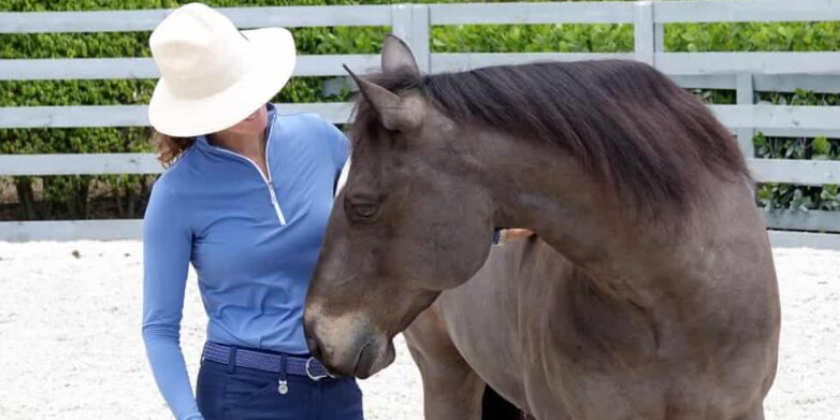
by Bettina Shultz-Jobe, LPC, NBCC | Apr 20, 2023 | Case Studies, Personal Growth, Testimonials & Reflections
One of our dedicated Natural Lifemanship practitioners, Sarah Willeman Doran, recently authored a chapter in the new book, Integrating Horses into Healing that details her transformational healing journey with horses and specifically, her transformational experience with Natural Lifemanship.
As a Dually Advanced Certified NL Practitioner and Equine Professional (Advanced NLC-P,EP), Sarah embodies our mission at Natural Lifemanship and we’re excited to share a brief recap of what she shared about NL. To read the full chapter and other life changing stories of healing and transformation, get the book here: Integrating Horses into Healing.
A Fallen Star
Sarah’s relationship with horses begins in the competitive world of showjumping. At a young age, she was competing at the Grand Prix level and was seen as a rising star in the sport. She knew how to get the most out of her horses and saw great success early on. There was no telling how far she could go.
But behind the scenes, Sarah had faced abuse from one of her coaches. She’d suppressed her trauma to continue to perform in the sport she loved, and didn’t realize until far later how damaging this was.
Sarah’s meteoric rise in Grand Prix jumping would come to an abrupt end following traumatic riding injuries. She would eventually recover to win an intercollegiate individual national championship riding for Stanford University, but would never be able to return to a Grand Prix jumping level, and stepped out of competitive horse jumping.
But her journey with horses would eventually take a new path. .
A New Beginning
Following early retirement from competitive riding, Sarah shifted her focus to developing young horses. At the same time, she was also walking the path of personal growth and deep healing.
When Sarah came across the Fundamentals of NL and the Fundamentals Practicum, her relationship with trauma was changed forever. She found a new understanding of how trauma affects the nervous system, opening the way to greater self-compassion and healing.
“The NL model gave me a chance to work through nervous-system activation ‘in the field,’ which can create a more embodied and deeper experience than an office setting provides,” Sarah writes.
Finding early success with the Fundamentals of NL, Sarah went on to do a series of therapy intensives with her Natural Lifemanship therapist, each lasting three to four days.
“We processed a series of traumatic memories, and I truly felt my sense of them shift. It’s not that I’ve forgotten any of what happened, but now I can think of those things without feeling a jolt through my body,” Sarah explains.
Sarah’s third intensive session was her breakthrough moment, which she described as “coming out of a fog.” Finally able to process her trauma and have a deeper connection with her inner being, she gained the strength and wisdom to make positive changes in her life.
The Natural Lifemanship Institute offers Transformative Training
As Sarah continued to take NL courses for her own growth and her work with clients, she explained, “For me, at the trainings, some of my most powerful growth experiences were not even about the work with the horses. Rather, certain interpersonal moments were what the field of psychology calls ‘corrective emotional experiences.’ These were moments when I felt truly seen and cared for, when trainers recognized my needs and practiced one of the core NL principles: making sure not to take away the other’s sense of choice.” The following story is about one of these moments at an Intensive Practicum.
Sarah describes working with the paint horse she’d been partnered with: “It felt satisfying, as we practiced various ways of moving together in the pen and went on to haltering with connection. I later learned the owner said he was head shy, but at the time, our connection had evolved enough that he would move his nose toward the halter and stay relaxed as I brought it over his ears.” It was in one of these moments of quiet connection that a sudden burst of wind and rain swept through the arena. In a split second the horse lost awareness of Sarah, and she narrowly dodged him as he swung his head and took off.
When Sarah returned to the horse, he was agitated, running from one side of the pen to the other, unable to calm down. When she asked for his attention, he would buck and kick at her, at close range.
“I was still focused enough on performing well and pleasing others that I persisted in the pen to a point of complete exhaustion, trying in vain to raise my energy and bring the horse’s attention back to me, to help him connect and calm down,” Sarah said. “By the time I told one of the trainers that I was too exhausted to make any progress, I was in a state of nervous-system freeze that I hadn’t experienced in a long time. It felt familiar. . . I was afraid to tell anyone the extent of what I was feeling, and as usual, I looked basically fine from the outside. I had learned, through many years, how to keep going through these things and not reveal what was happening inside.”
Sarah was worried about going back to training the next day. With her nervous system in overwhelm, she didn’t feel she’d be able to work with the horse safely if he was still dysregulated and aggressive.
“When I arrived, I asked one of the trainers if we could speak privately. When westepped aside from the group, I couldn’t stop the tears, and I felt ashamed. I told her what I was going through, and also that I was worried about letting the trainers down. What happened next felt like a miracle to me: she listened with total kindness and without judgment; she expressed the trainers’ full confidence in my abilities with the horses; and she said I did not have to work with the horse if it didn’t feel safe.”
Sarah tried to work with the horse again, but he was still in an agitated state, and Sarah was still triggered. She was used to being the tough horsewoman from her competitive days and tried to persist at first, but was quickly faced with a fork in the road. Should she continue to hang on to this persistence that made her successful in the competitive world, or was it time to let go and do what was best for her well-being?
Sarah, with the help of her NL trainer, decided to let go.
“This was an empowering turning point. At the time, in my evolution as a person, what I needed most was to choose to put my well-being first. Not only to choose that but to be supported in that choice. To see and feel that my safety mattered, that taking care of myself was not a cause for rejection or abuse of any kind, but rather led to an experience of safety,” Sarah said. “This is what the NL trainer provided that day. She sat with me beside the pen, supporting me in my decision. . . this was a transformative experience of expressing a boundary around my safety and well-being and having it honored.”
Sarah learned more than just how to let go that day. As someone who’d experienced multiple forms of trauma in her youth, it had been difficult for her to express and uphold boundaries. She had been in relationships where boundaries were violated, and hadn’t known how to break the cycle.
At that moment, she was able to make a new choice.
“As we heal, the choices in relationships become much clearer. If we express our boundaries clearly and repeatedly and someone still can’t honor them, the relationship isn’t healthy,” Sarah explains. “At that point, we can either attempt stronger ways to make our request, or we can choose to end the relationship.” That day, Sarah chose to end the relationship knowing that it wasn’t healthy to push herself to work with this horse.
She called this moment a fundamental shift and a vital one for her own healing journey.
The ripple effect of healing
“Learning and practicing Natural Lifemanship changes the way we live. When we improve our relationships, the healing effect ripples outward through those around us. The more we heal ourselves, the more powerfully we can help clients,” she said.
Like many healing journeys, Sarah’s has been long and painful. However, it has also been deeply rewarding. With the transformation she experienced through her Natural Lifemanship training and therapy, Sarah has seen long-term tangible benefits in her life.
With a healthier and renewed nervous system, her baseline state has transformed from stress into wellness. She no longer lives with chronic pain, she feels at home in her own body, and she’s able to build the kind of healthy, connected relationships that bring the greatest sense of meaning in her life.
Sarah is now a certified life coach and a mindfulness meditation teacher. She is building her own Natural Lifemanship practice in Colorado, with plans to open a retreat center in the mountains.
Sarah is also an author, and you are sure to enjoy her writing. Here are some articles that focus on NL specifically:
Natural Lifemanship at the Wild Horse Sanctuary, Part 1
Natural Lifemanship at the Wild Horse Sanctuary, Part 2
The Healing Power of Connection
Building Connected Relationships
Begin Your Own Healing Journey Today
We couldn’t be more grateful to Sarah for sharing her journey of transformation with Natural Lifemanship. The beginning of Sarah’s journey is like so many for our NL community – it all begins with the Fundamentals of Natural Lifemanship.
If you’re ready to learn the principles of Natural Lifemanship, join us for this life-changing training.
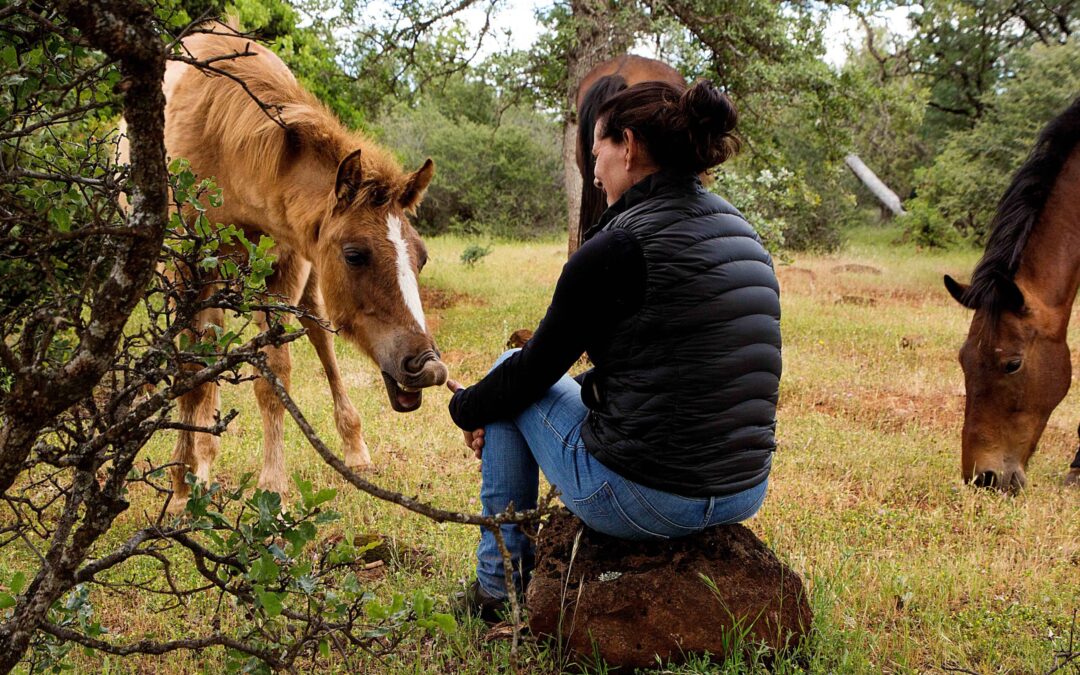
by Laura McFarland | Apr 10, 2023 | Applied Principles, Basics of Natural Lifemanship, Case Studies, Personal Growth, The Latest in Equine Assisted Therapy and Learning
We are beyond thrilled to share an amazing new resource for the field edited by Cheryl Meola. We had the honor of contributing severals chapters to this book. When she approached us about contributing chapters, Cheryl said she wanted this book to be a resource for people newly entering the field of equine-assisted services. We were asked to write in a “newbie”-friendly way. That said, we believe this book is equally valuable for seasoned professionals and for those new to the field.
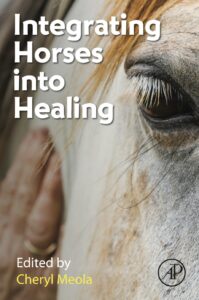
Here is a list of the book’s chapters with the titles we contributed in blue:
-
- Natural therapeutic aspects of horses by Cheryl Meola and Malaika King Albrecht
- The evolution of equine-assisted services (EAS): horses are good for people by Lorrie Renker, Octavia Brown and Pebbles Turbeville
- Horse Speak and Partnership by Sharon Wilsie and Laura Wilsie
- Relational Equine-Partnered Counseling (REPC) by Hallie Sheade
- An in-depth approach to relational work with equines: Natural Lifemanship by Bettina Shultz-Jobe and Kathleen Choe
- Breathing into relationships: the HERD Institute approach to equine-facilitated psychotherapy by Veronica Lac
- Side-to-side astride: the benefits and challenges of equine mounted work in trauma processing by Susanne Haseman
- Blended therapy modalities in equine-assisted psychotherapy: integrating equine-engaged internal family systems (EE-IFS) and equine-connected eye movement desensitization and reprocessing (EC-EMDR) by Jenn Pagone and Kathleen Choe
- Medical therapy (OT, PT, SLP) enhanced with hippotherapy by Joann Benjamin, Ruth Dismuke-Blakely and Karen Gardner
- The Equus Effect: a road to regulation through equine-assisted learning by Jane Strong, David Sonatore and Elizabeth E. Lloyd-Richardson
- Serving those who served…and still serve by Tara Mahoney
- Beyond mind and body: spiritual connections in equine-assisted services by Kathleen Choe and Laura McFarland
- Be the Horse’s Advocate by C. Mike Tomlinson
- Enhancing the horses voice: incorporating Horse Speak into psychotherapy by Susanne Haseman, Sharon Wilsie and Laura Wilsie
- Exploring socio-emotional and cognitive development in horses by Tim Jobe, Tanner Jobe and Rebecca J. Hubbard
- Not just horsing around: an equine professional’s guiding principles by Malaika King Albrecht
- The role of the equine professional in equine-assisted services by Tim Jobe, Tanner Jobe and Reccia Jobe
- Heart centered horsemanship: the horse trainer’s perspective in EAS by Stacey Carter
- A holistic perspective: My transformative journey through Natural Lifemanship by Sarah Willeman Doran
- Are we there yet? The ongoing journey of healing for the healers by Kathleen Choe
- Interventions and strategies toward mental health and wellbeing for professionals by Aviva Vincent and Joanna Robson
- Starting or restarting an equine-assisted services organization: Don’t put the cart before the horse by Nancy Paschall
- The key to a successful non-profit board by John Matthew Kundtz
- How do you know it works: Evaluating equine-assisted service programs by Maureen MacNamara
- Bridging research and practice in equine-assisted services by Kimberly I. Tumlin
- Conclusions and future directions
Each chapter in this book is contributed by an expert in the field and provides an overview of the topic plus concrete examples and helpful resources. We are so proud to have been a part of this effort and cannot recommend this book strongly enough!
Psst…when you order the book through the links in this article, we earn a small affiliate commission. This transparency is important to us, but since we contributed to the book, you know we recommend it whole-heartedly!
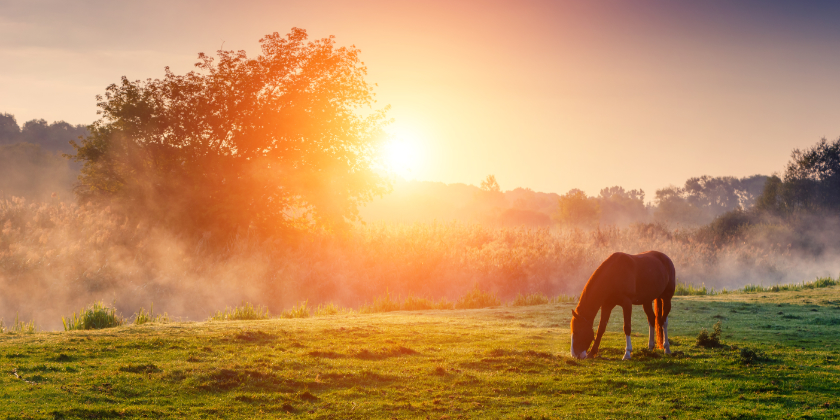
by Kate Naylor | Jun 7, 2022 | Applied Principles, Basics of Natural Lifemanship, Case Studies, Personal Growth, The Latest in Equine Assisted Therapy and Learning
We are so pleased to announce that our Natural Lifemanship team has been published again!
A lovely new resource is now available for a variety of practitioners – Nourished: Horses, Animals & Nature in Counselling, Psychotherapy & Mental Health, edited by Meg Kirby, is out now!
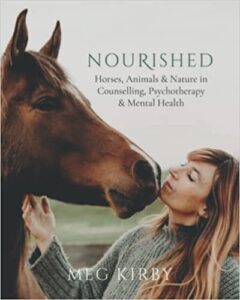
Not only do we share our lives with nature and animals, they are an integral and influential part of our well-being. Within the pages of Nourished is wisdom collected from respected professionals across the globe (of whom we are honored to be a part!) on how we can intentionally incorporate the natural and animal world into mental health, wellness, and personal growth.
Working With Horses to Develop Secure Attachment
Natural Lifemanship’s CEO and co-founder Bettina Shultz-Jobe and I are thrilled to have contributed a chapter in Nourished titled “Working With Horses to Develop Secure Attachment”. In this chapter we offer theory as well as a case study discussing how attachment wounds can be brought into awareness, gently explored, and healed through authentic engagement with equines.
We ventured not only into the cognitive aspects of attachment, but the embodied ones as well – for much of our relational patterns are held in the body. As this NL community knows, being in relationship with horses is a unique opportunity to transform ways of being, even when deeply held in the unconscious body.
If you are a practitioner in the field of equine assisted services, this is a chapter, and a book, not to be missed!
Psst…when you order the book through the links in this article, we earn a small affiliate commission. This transparency is important to us, but since we contributed to the book, you know we recommend it whole-heartedly!
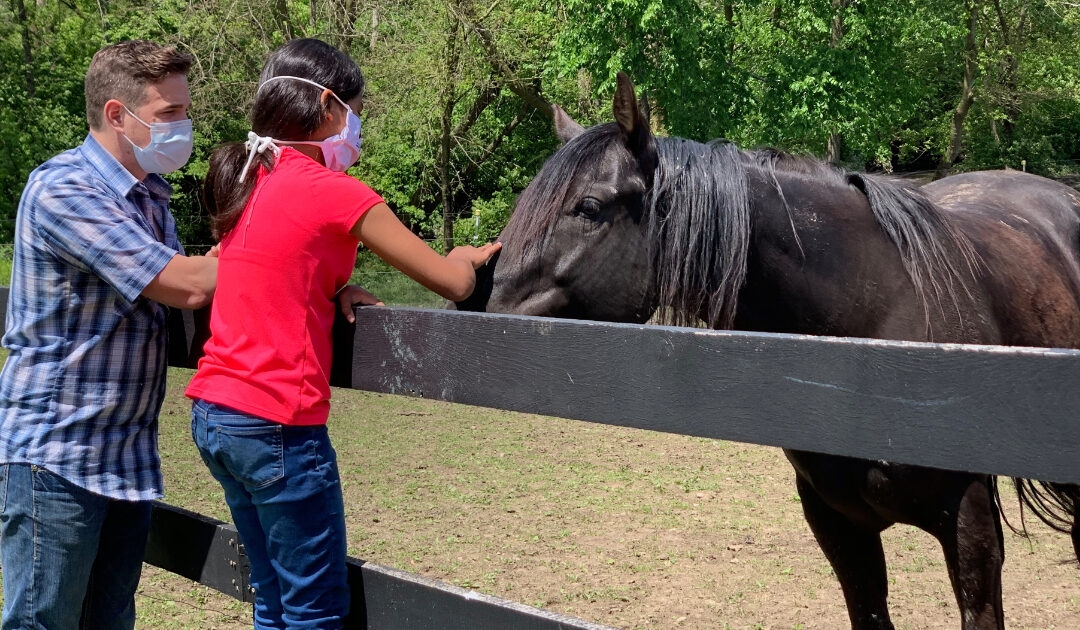
by Michael Remole | Jun 3, 2020 | Case Studies, Testimonials & Reflections
This is a letter Michael Remole, NL trainer, recently sent to his clients. We were touched. We related, and we felt more connected to our community. We hope you feel the same way. Thank you Michael for your thoughts, your kindness, and your dedication to genuine connection.
As an empath, a business owner, and a mental health professional, there are so many pieces of this COVID-19 plan that are quite difficult to fully address and properly articulate. In short, my heart is broken.
My heart breaks as I put on my mask and head out to greet your child. I try hard to smile under this mask and show the excitement with my eyes, yet it is not the same. I can feel the glances of “are you going to make my child wear a mask?” and “you believe this stuff?” and “it’s about time you meet in person again.” My heart breaks as our young clients try to make sense of why a “safe place”—a place where we promote authenticity and a metaphorical mask free zone now requires a mask to keep us safe. I cringe as I watch myself and our client fight our masks as they slide down our face, get into our eyes, and muffle our words. It’s not the same, and I battle wondering whether telehealth was better than this awkward clumsy in-person session. But I have to remind myself that connection is on a continuum and this IS connection, even if it feels awkward.
My heart breaks as I watch your child touch doorknobs and grab buckets or latches. I ask myself a million questions…did we wipe that down properly since the last client touched it? Did the client touch their face after? I pray that my clients don’t feel me holding my breath, but I know they do. My biggest fear is not me catching the virus, but what if a decision I made to open up to in-person sessions causes your family to be directly impacted by this virus. I ask myself a million times, “did I make the right decision?” We want to help people and I pray that this is somehow helping.
My heart is also very heavy for everyone given the way this virus is wreaking havoc on all areas of our lives—most importantly our mental health. I hear the hurt in your voices and I feel the fear about the current state of things, as well as the fear of the future when we talk. I know how desperately we all want answers and we want to fix this. As an empath, one of my greatest gifts is to feel what you are feeling. Right now, it is as if the volume to my empathy is blasting to a deafening volume. Daily I am faced with the question, do I shut it off, do I figure out some way to turn down the volume, or do I learn to live with the volume blaring? As I think about that, I know the pros and cons of each decision. I often find myself paralyzed by all of the various ways for me to move forward.
Over the last two months, I have shared with clients about ambiguous loss and how it impacts people. We’ve talked (I’ve even taught) on the idea that we are all grieving various losses and that each one of us has experienced loss on various levels. What I did not realize was that coming back to in-person sessions would be what made me see more of the ambiguous losses.
Lately, I’ve been working on the things I can do for myself personally that help me move toward a healthier version of myself. I returned to running during this time after one of Dr. Perry’s office hours with Dr. Brandt. She talked about rest, refuel & reflect. Something struck me that day and I have logged over 100 miles in just a few weeks. I have been running the same road every day, but varying the distances. This past Monday I decided to do one of my shortest runs and go a different route. Interestingly, it was insane how difficult it was. It felt as if I were running a marathon. My body did not have any problem with the mileage. My brain did because it was new; it wasn’t what I was used to and I did not have those normal benchmarks of how far I had run. This is similar to what’s been happening with COVID-19 for me. I’ve been on the same route (telehealth) for a while now. Even though it’s had its own challenges, it’s what I know. This week, we embarked on a new route by adding some in-person sessions. Mentally, it has thrown me for a loop.
During my runs, I’ve been listening to music and an older song from FUN came on my playlist, “put one foot in front of the other.” That has been on repeat in my head. So today, I am taking one foot and I am placing it in front of the other. I do not have the answers and I cannot fix this situation. As an agency, we will continue to strive to provide exceptional services, despite having to wear masks and concerns over germs. As an individual, I will work hard to identify those areas that are out of my control and what areas I can control. And together with my clients, we will navigate this new normal and work hard to ensure that the physical masks do not hinder what we both need—genuine connection.









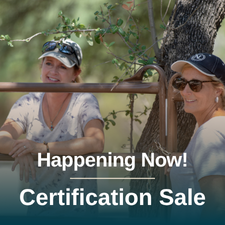
Recent Comments